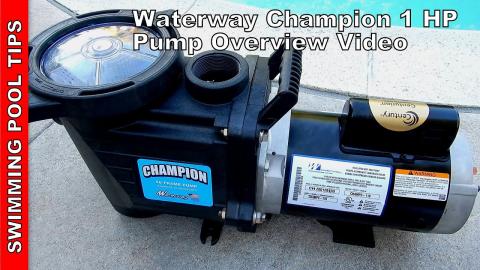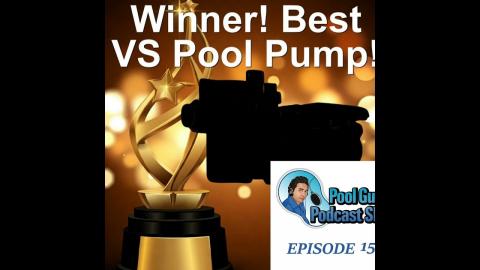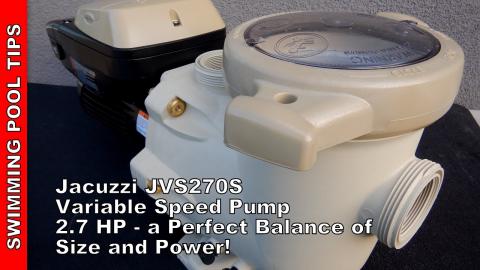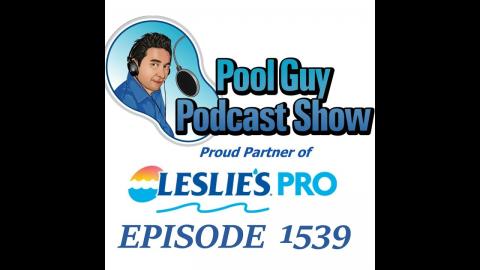New Single-Speed Pump Law and How it Affects You: Interview with Steve Jones of Fluidra/Jandy
Description
The Department of Energy regulation will require all pumps past a certain horsepower rating to meet an efficiency threshold. It looks as if, effective in 2021, variable-speed pumps will become mandatory for powering a pool's or spa's filtration system and other applications.
What does this mean to builders, installers, and consumers? Basically any single-speed pump greater than ¾ hp will no longer be allowed to be sold beginning July 19th 2021. Manufacturers will not be allowed to sell these single-speed pumps that do not meet the new DOE regulations. Since most single-speed pumps over 1 hp currently fail to meet the DEO guidelines, one of the only options for upgrading your pool pump will be the purchase and installation of a Variable Speed pump (after July 19th 2021).
This is not all bad however since Variable Speed pumps are now at their pinnacle in design and function and the new DEO rules have actually made the manufacturers step up their game. Jandy now offers a wide variety of Variable Speed pumps ranging from .85 hp to 2.7 hp and most of them are dual voltage. This means they will work with both 230 volts and 115 volts depending on the model. Since there are a number of older homes on 115V single breakers, just a year ago there weren’t many options for you regarding upgrading to a Variable Speed pump. Now there are about 6-7 different VS pumps from all three major manufacturers that off dual voltage.
By running at variable speeds which I will refer to as RPM, the pump consumes less power as it is running at a lower RPM. Just to contrast, the 2 HP WisperFlo pump I replaced would run at 2400 Watts each hour for 4 hours a day – consuming 9,600 watts or 9.6 kWh of electricity.
“The kilowatt-hour (symbol kWh) is a derived unit of energy equal to 3.6 megajoules. If the energy is being transmitted or used at a constant rate (power) over a period of time, the total energy in kilowatt-hours is the power in kilowatts multiplied by the time in hours.” -Wikipedia.
To see how much you can save each year try entering your current pump size and run time in Jandy's online calculator. I can almost guarantee that the savings in the first year will pay for the VS pump itself: http://www.jandy.com/en/calculators/pool-pump-savings
Since the VS pump is running at a lower RPM the motors on the VS pumps are very long-lasting. Imagine running a Marathon at full speed without slowing down from mile one to mile 26. That is how a standard speed pump runs all day long. Over time the bearings start to wear out, the motor gets loud and the internal parts like the impeller wear down. And they don't make pool motors like they used to, you are lucky to get 4 years out of a single-speed motor built-in today's market.
The VS pump, in contrast, uses a DC motor or Direct Current motor as opposed to your standard pump running off of AC or Alternating Current. The DC motor can better handle running at variable speeds, and since the motor is rarely running at its full 3450 RPM, the lower speeds translate into less strain. So instead of running a marathon every day with 4-minute miles, which would create much strain and wear on your feet, legs, and body, a VS pump walks the 26.2 miles each day.
I have several VS pumps on my pool route that or 8 or 9 years old, the first generation of these pumps, and they are all working just fine. I have yet to replace a VS pump motor. So the long term investment in a VS pump should include at least 2 motor replacements of a standard speed pump at the cost of $400 each. A great side benefit of a VS pump is its longevity along with the money you save on energy, you save money also on replacement costs. Something that is often overlooked.
Pool pumps are noisy. And if you have one running up against your house, you hear it every day. When you are outside enjoying your backyard, the drone of the pool pump is constant. Since VS pumps run at a lower RPM, the pump runs much quieter. In fact at 1750 RPM you have to check to make sure it is really running. Even at 2400 RPM it is still much quieter than a standard speed pump. After installing my VS pump I frequently step in the equipment area to see if it is running.
Visit my Website: http://www.swimmingpoollearning.com/
eBook: https://www.swimmingpoollearning.com/swimming-pool-care-ebook
YouTube Video Index: http://poolmandave.blogspot.com/2014/03/swimming-pool-tips-reviews-how-to-video.html – A list of all of my videos.
Blogger: http://poolmandave.blogspot.com/
Join me on Patreon: https://www.patreon.com/poolguycoaching
Podcast Website: https://www.thepoolguypodcastshow.com/
Coaching Site: https://poolguycoaching.com/
Shop at Leslie's: Leslie’s Pool Supplies has been do-it-yourselfers and pool trade professionals trusted partner since 1963, providing quality products and services to make pool care easy and solutions and expertise to do it right. http://lesliespool.com/?
utm_medium=referral&utm_source=spll&utm_campaign=spll













